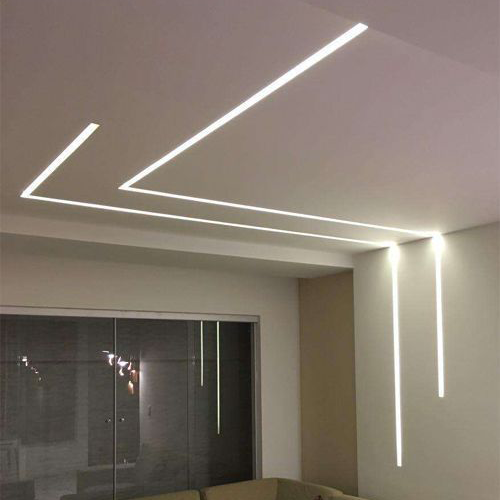
LED lighting aluminum refers to LED aluminum profiles, also known as aluminum LED channels or extrusions, specifically designed for the manufacturing of LED lights. Aluminum is an ideal material for LED lighting fixtures, as it offers many benefits such as excellent heat dissipation, lightweight, high strength, and corrosion resistance.
LED profiles are specially constructed with thermal management in mind, allowing them to effectively dissipate heat generated by LEDs. These aluminum profiles can be customized according to the specific needs of the LED lighting application, and they can be used for various lighting fixtures, such as linear lights, light bars, pendant lights, and so on.
LED aluminum profile is also a type of extruded aluminum heat sink designed specifically for LED lighting applications. It provides a heat sink that dissipates the heat generated by the LEDs, which can significantly improve the lifespan and performance of the LEDs.
LED aluminum profiles are usually made from 6000 series aluminum alloys, like 6063, which is known for its superior combination of strength, formability, and corrosion resistance. The specific alloy used may vary depending on the manufacturer and application requirements.


In terms of temper, LED aluminum profiles are mostly produced in the T5 or T6 temper. Both T5 and T6 temper offer desirable mechanical properties, including high strength, rigidity, and durability, making them perfect for use in LED lighting applications. Additionally, the choice of temper may depend on factors such as the size and shape of the LED aluminum profile.
LED aluminum profiles are widely used in various LED lighting applications, including:
Residential lighting: LED aluminum profiles can be used for task lighting, under-cabinet lighting, and general ambient lighting in homes.
Commercial lighting: LED aluminum profiles are ideal for illuminating retail spaces, offices, and other commercial environments.
Architectural lighting: LED aluminum profiles are used for outdoor and indoor lighting applications, such as building facades, bridges, and landscape lighting.
Automotive lighting: LED aluminum profiles are used to create high-quality LED lights for vehicles, including headlights, taillights, and fog lights.
Signage lighting: LED aluminum profiles are commonly used to create illuminated signage for businesses, restaurants, shopping malls and other commercial establishments.
Display lighting: LED aluminum profiles can be used to create back lighting for electronic displays, such as digital signage.
Some common types of LED profiles include:
Surface-mounted profiles: These profiles are designed to be mounted directly onto a flat surface, such as a wall or ceiling.
Recessed profiles: These profiles are designed to be installed beneath a surface, such as within a groove or channel in the ceiling.
Corner profiles: These profiles are designed to be installed at a 90-degree angle, making them ideal for use in corners or other tight spaces.
Curved profiles: These profiles are designed to be flexible, allowing them to be bent and curved to adapt to unique lighting configurations.
In a word, LED profiles offer a durable, customizable, and efficient solution for LED lighting installations, making them the best choice in the lighting industry.
